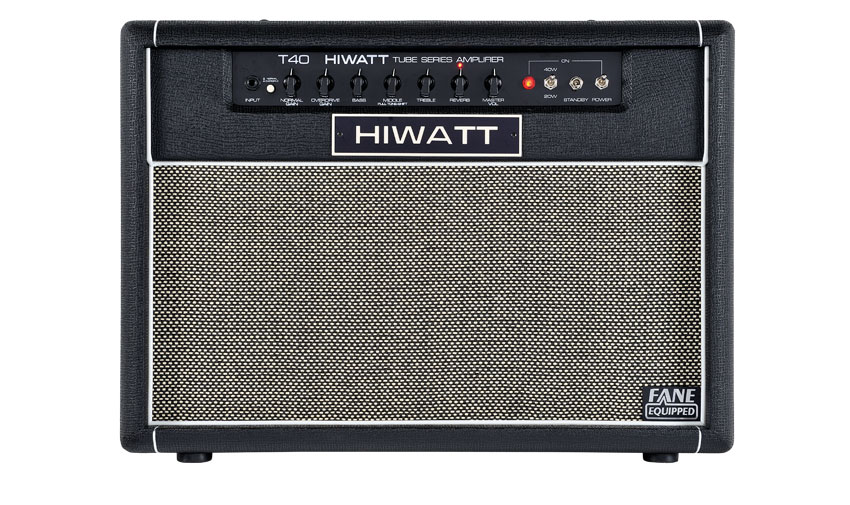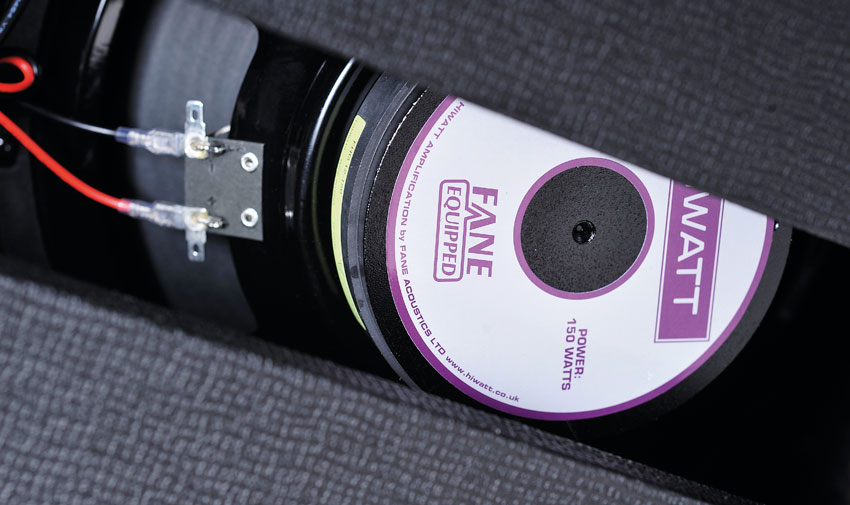MusicRadar Verdict
Worth checking out if you're looking for an alternative mid-priced Brit sound.
Pros
- +
Classic Brit styling. Good build quality.
Cons
- -
Less tonal range and fewer features than we'd expect.
MusicRadar's got your back

Hiwatt T40 2x12 combo review

Speakers
The (other) legendary UK amp brand, Hiwatt, enters the mid-price combo market with a Chinese-made 40W valve/solidstate 2x12.
One of the great British amplification brands, with a history that dates back to the late 60s, the Hiwatt story fills a significant chapter in the annals of rock guitar.
"The original amps were built in Kingston upon Thames, and powered many top 70s supergroups to international stardom"
The company was founded by former Sound City/Dallas Arbiter engineer Dave Reeves, and the original amps were built in Kingston upon Thames, and powered many top 70s supergroups to international stardom - including Jethro Tull, King Crimson and, of course, The Who and Pink Floyd, among many others. The coveted early models, wired by MOD contractor Harry Joyce to real military specifications, are minimalist and devastatingly loud, even by the standards of that deafening bygone era.
Since then, the brand has been bought and sold several times, but is thankfully still active in the UK. Alongside painstakingly accurate - and expensive - reissues of the sought-after DR series, there's a more affordable line, which is designed in the UK and made in China, called the Tube Series. We're taking a look at one of its most popular models: the T40 2x12 combo.
Build
The combo is as true as cost-effectiveness will allow it to be to the original Hiwatt look, with black basket-weave vinyl, white piping and stringing, plus a salt and pepper-coloured grille cloth. The original Somic grille cloth fabric used by Hiwatt was strong enough to stop a charging rhino, yet amazingly it was made from woven paper!
In keeping with the original, the cabinet has heavily radius'd edges and no corner protectors. The Hiwatt nameplate is moulded plastic, but looks as close to the engraved Traffolyte original as makes no difference.
"Checking around the back, it's a nice touch to see the Fane label on the amp's loudspeakers"
Original Hiwatts also had engraved control panels made from the same material. Here, on the Tube Series, it's neatly silk-screened white-on- black and look quite authentic, even up close. Checking around the back, it's another nice touch to see the Fane label on the amp's loudspeakers.
The electronics are on decent quality through-plated PCBs that hold preamp, power amp and power supply components, including the valve base, and the T40's chassis also supports a small internal reverb spring. Along with adequately large transformers, everything bolts on to reasonably sturdy open-ended bent steel chassis, which also forms the front and rear panels.
The T40 has separate gain controls for its normal and overdrive modes feeding a conventional bass, mid and treble EQ. As well as a master volume, there's a reverb level control and a pull-switch on the mid control that shifts the centre point of the midrange down, lessening its effect.
The rear panel features a pair of jacks for its effects loop, a line-out jack and a stereo (TRS) jack that takes a standard two-button latching footswitch. This switches from normal to overdrive and toggles the reverb on or off. The footswitch is an extra, however, but there's a push-button switch on the front panel to change channels, and the reverb defaults to 'on' with no switch plugged in.
A toggle switch takes the T40 from full power to a half-power mode by effectively switching off two of its four EL84 output valves. Like other amps in the range, it uses a mix of valves and transistors for its overdrive. The electronics appear reasonably sturdy, and should handle average gigging needs without any issues.
Sounds
We tried out the Hiwatt with a Les Paul Standard and a Strat - two guitars that cover practically any rock guitar tone between them. It was a little noisier than we would hope for when switched on, but this is often down to poor-quality valves, so it isn't necessarily a major concern.
"Cleaner sounds are gutsy with an edgy aggression that suits the Hiwatt character well"
Cleaner sounds are gutsy with an edgy aggression that suits the Hiwatt character well, although no vintage Hiwatt is capable of the higher-gain distortion tones. Generated by transistors as well as valves, the distortion is good for punk, garage rock and retro lo-fi blues. There's not much in the way of subtlety, but it's fun and responsive to play, reminding us of the early LM308-powered Pro Co RAT pedals that we all wanted back in the 80s. There's plenty of volume to get your point across, along with lots of punch from the 2x12 open-backed cabinet.
The EQ and mid-shift controls work smoothly and don't change the tone too much, which is often better than putting in too much EQ range and making an amp difficult to dial in. Reverb fans may be disappointed by the T40's reverb; with a crashy tone and short delay, it's not the most flattering effect we've heard.
The T40 does a reasonably good job as a mid-priced low-wattage amp, and 10 years ago we may have been satisfied with it. However, times have moved on, and we tend to expect a lot more from Chinese-made products these days.
In the mid-priced amp market, there's a lot of competition, and most of it is seriously good value for money, making the Hiwatt's limited features look a little dated. The stripped-down approach is, of course, part of the Hiwatt ethos, but at this level it's all about features, and we wonder whether the T40 has quite enough to compete.
Aimed at serious amateurs, the T40 is a fairly portable prospect when compared with other 2x12 combos. It's maybe not quite the vintage Brit tonal experience the cab styling and brand might suggest, but great for a lot of young bands looking for credible alternatives to the more common names.
“Excels at unique modulated timbres, atonal drones and microtonal sequences that reinvent themselves each time you dare to touch the synth”: Soma Laboratories Lyra-4 review
“I used everything I knew about music”: How Green Day exceeded expectations with their most ambitious song
YouTube just added AI tools that makes musicians, library music and video editors redundant









